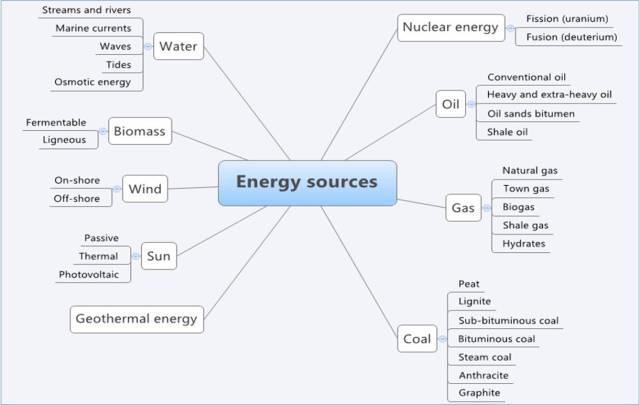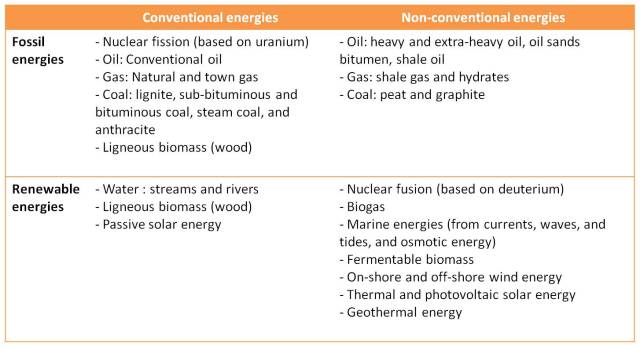Today, I’d like to share with you two mappings of energy sources which underlie all my articles.
First, here’s a family tree of as many energy sources I have been able to list until now:
And second, here’s a mapping of energy sources according to their being conventional/unconventional and fossile/renewable energy sources:
As you can see in this matrix, all unconventional energies aren’t renewable, and some renewables are conventional.
However, this matrix’ objective is not to identify the energy sources that we can hope to see develop in the future since a renewable energy isn’t necessarily clean. For example, nuclear fusion, which can be seen as renewable since deuterium is abundant in water, might generate radioactive waste, just as nuclear fission does. This issue might be the subject of a future article.



Indeed an interesting contribution as a summary of the big picture …
Thank you! The next articles I will publish will go into details about why and how I mapped energy sources this way. Hope you’ll enjoy them too!
Hi everybody,
A friend of mine who recently read this post emailed me the following comment, which I want to share with you :
“I think there is 2 more energy sources :
The use of temperature difference in the see and in the family of nuclear fission, the use of thorium a missing way cause of military re use of Uranium/Plutonium in the 60’s. This second source is less dangerous and Tree Miles Island or Fukushima could happen with.
Usually, the geothermal energy is divided in very low, low, median and high energy (supercritical flood), with a specific sector the EGS (Enhanced Geothermal System).
Note that the problem is not to produce energy but to store it.
Note also that nuclear fusion had never been an energy source, and even if there is some very expensive research games (ITER, Tohamak,…), nobody is now thinking that it could produce energy before centuries.”
What I answered him is this :
About the use of temperature differences in the seewaters, I include it in geothermal energy, although I didn’t go into details in my mapping and specified it. About nuclear fission based on thorium however, I didn’t know about it at all and after a little research, I’d say I’ll classify it as an unconventional fossil fuel since it is still only at the research / prototypes phase and though it is 3 to 4 times more abundant than uranium, it is a residuum of rare earths retrieval (rare earths being not precisely renewable). Moreover, thorium is sometimes called the basis for green nuclear energy but it is still producing nuclear waste that have to be quarantined for hundreds of years before their radioactivity levels become acceptable again.
I won’t go further about it all, or I might ruin the fun of the coming articles in which I discuss the why and how I chose to classify each type of energy source where it is.
Hope to see you soon again on this blog,
Mélanie